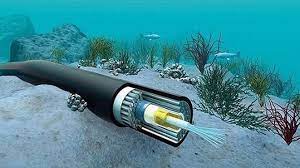In the vast expanse of our interconnected world, the invisible highways beneath the ocean’s surface play a crucial role in global communication. Submarine optical fibers, often overlooked by the casual observer, form the backbone of international data transmission, enabling seamless connectivity across continents. In this exploration, we delve into the depths of these remarkable technological marvels, unraveling their importance, construction, and the challenges they overcome.
The Essence of Submarine Optical Fibers:
At the heart of global communication lies a network of undersea cables, akin to the arteries and veins of the digital realm. Submarine optical fibers are the carriers of this vital lifeblood, facilitating the transmission of vast amounts of data at incredible speeds. Unlike traditional copper cables, optical fibers use pulses of light to transmit information, making them not only faster but also more reliable over long distances.
Constructing the Lifelines:
Submarine optical fibers are a feat of engineering, designed to endure the harsh conditions of the ocean depths. The cables consist of multiple layers, each serving a specific purpose. The core, where light pulses travel, is typically made of ultra-pure glass or plastic. Surrounding the core is cladding, which reflects the light back into the core, ensuring minimal signal loss. The outer layers provide protection against water pressure, abrasion, and potential damage from external forces.
Manufacturing these cables involves meticulous precision. The core’s optical purity is crucial, as any impurities could attenuate the signal. The cables are then laid on the ocean floor, often spanning thousands of kilometers, connecting continents and forming the backbone of the global internet.
The Need for Submarine Cables:
The demand for high-speed, reliable internet has driven the expansion of submarine cable networks. With an ever-increasing volume of data, these cables serve as the lifelines for international communication, supporting activities ranging from financial transactions and scientific research to everyday social interactions. Submarine cables are the most efficient way to transmit data across oceans, surpassing satellite communication in terms of speed and reliability.
Overcoming Challenges of the Abyss:
Building and maintaining submarine cables pose unique challenges. The cables must navigate through diverse terrains, including deep-sea trenches, rugged underwater landscapes, and areas prone to seismic activity. Protection against external threats, such as fishing activities and natural disasters, is a critical consideration. Robust engineering solutions, including armoring and burial beneath the ocean floor, help safeguard these vital communication links.
Ensuring Reliability and Redundancy:
Reliability is paramount in the realm of submarine cables. To minimize the risk of service disruption, multiple cables often connect key locations, providing redundancy. This ensures that even if one cable is damaged, data can still flow through alternative routes. Additionally, advanced monitoring systems constantly assess the health of these cables, allowing for swift responses to potential issues.
In a world where information travels at the speed of light, submarine optical fibers form the unsung heroes of global connectivity. Their construction, resilience, and ability to overcome the challenges of the deep illustrate the relentless pursuit of innovation in the field of telecommunications. As we continue to push the boundaries of technology, these undersea lifelines will remain essential, connecting us across oceans and shaping the future of our interconnected world.
Contact Linden Photonics to get a quote or Call Us at (978) 392-7985

